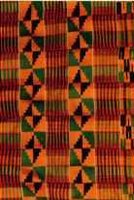The author, Kwame Anthony Appiah, should know. He's a native of Ghana and related by marriage to the most recent three Ashante kings. But his mother is British and he teaches philosphy at Princeton University. He makes a strong argument for the position that the cultural preservationists, such as those in Unesco who recently passed a resolution for the "protection and promotion" of cultural diversity, are not only fighting a losing battle, they have taken a side which should lose.
Preserving cultural artifacts, like artwork or music or architecture or history, is fine. But those who would preserve entire traditional cultures because they're somehow more "authentic" than the modern world make a terrible mistake. They forget that a charmingly authentic African village is usually that way because its people are too poor to be otherwise. They may be desperate to change, to modernize, knowing full well what modernization will bring, but don't have the resources. You cannot preserve the culture of a poor rural area -- as opposed to its cultural artifacts -- without locking its people into poverty, with all the disease, misery, short life expectancy, and infant mortality that poverty produces. This is hardly an act of kindness, and certainly not what they would choose for themselves.
Not only is this a cruel thing to do, not only is it impossible -- there is no village in Ghana so poor it doesn't have radios, and most Ghanaians have cell phones -- but it's ridiculous and foolish, as there simply are no pure and authentic cultures anywhere. Haven't been for thousands of years. We've been mixing and matching ever since we became human.
Here's a lovely example I gleaned from the article. If you say "traditional African" to most Americans, they think first off in terms of clothing. Every year at Kwanzaa you'll see African-Americans wearing something like this:

An ancient African clothmaking tradition, right? Hardly. That kind of cloth is called a Java print, as its origins are in the Javanese batik print cloth imported into Africa in the 19th century by Dutch traders. Sometimes the cloth didn't even come from Java, but was made and printed by the Dutch themselves. Think about that. 19th century cloth mill owners in Holland making printed cloth they thought Africans would like and would buy, thereby both reflecting and influencing the "traditional" look of African clothing.
You want something more traditional, you might go for some authentic kente cloth, like this:

This is handwoven cloth, a traditional handcraft of the highest quality, and the finest and most expensive kente cloth is made in the village of Bonwire out of silk. Wait a minute, silk? Are silkworms native to Africa? Indeed they are not. They're native to Asia, and the silk for kente cloth has always been imported, again usually by Europeans.
So you can't preserve pure, authentic, traditional cultures, because there aren't any. Anywhere.
There's more in the article. It's worth a read.
No comments:
Post a Comment